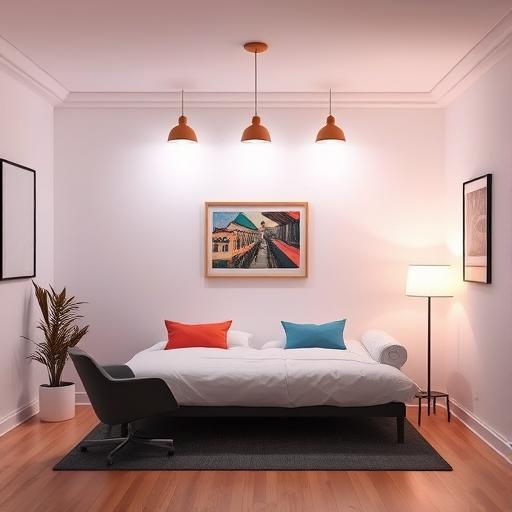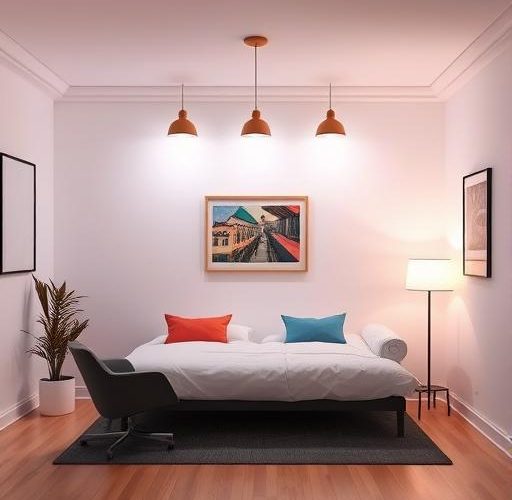Table of Contents Show
How to Control Lights with Arduino and IR Remote – DIY Smart Room
Smart homes are revolutionizing the way we interact with our living spaces, offering convenience, energy efficiency, and a personalized touch. While pre-built smart home systems can be expensive, building your own using affordable, accessible tools like Arduino opens up a world of possibilities. In this project, we’ll explore how to control LED lights using an Arduino and a standard infrared (IR) remote, transforming your room into a customizable smart environment. This hands-on guide is perfect for beginners and tinkerers alike, combining practical skills with creative freedom.
Understanding the Components
What is Arduino?
Arduino is an open-source electronics platform based on simple microcontroller boards and a user-friendly development environment. It allows you to create interactive projects by reading inputs and controlling outputs. For this smart room setup, Arduino acts as the brain that interprets signals from the IR remote and sends commands to your lights.
What is an IR Remote?
Infrared (IR) remotes are common in devices like TVs and stereos, using infrared light to transmit signals. These signals can be decoded by an IR receiver connected to Arduino, enabling you to control your DIY smart room with ease. Most IR remotes work with this project as long as their signal protocol is supported by the right library.
Required Components for the Project
To build your system, you’ll need:

- Arduino board (e.g., Uno or Nano) to process signals.
- IR receiver module (like VS1838B) to capture the remote’s commands.
- LED lights or light bulbs compatible with Arduino’s output pins.
- Jumper wires and a breadboard for prototyping connections.
- Resistors (220Ω for LEDs) to protect components from overcurrent.
- A power supply (USB cable or external source) for the Arduino.
Setting Up the Hardware
Connecting the IR Receiver to Arduino
Begin by connecting the IR receiver to your Arduino. The IR receiver typically has three pins: VCC, GND, and OUT. Wire VCC to the 5V pin on Arduino, GND to a ground pin, and OUT to a digital pin (e.g., D11). Ensure the connections are secure and free from shorts.

Adding LEDs to the Circuit
Attach your LED lights to the Arduino’s digital or PWM pins using jumper wires. Connect the anode (longer leg) of each LED to a pin via a 220Ω resistor and the cathode to ground. Proper resistor use is crucial to prevent LED burnout and ensure safe operation.
Powering the System
Power your Arduino via USB or an external 9V battery. If using USB, your computer will provide power during development. For a standalone setup, an external power supply with the correct voltage is recommended. Always double-check the power requirements of your components to avoid damage.
Writing the Code
Installing the IR Remote Library
Open the Arduino IDE and navigate to Sketch > Include Library > Manage Libraries. Search for “IRremote” and install the library by Shannon Westlake. This library simplifies decoding IR signals and handling button presses.
Understanding the Code Structure
The core of the project involves initializing the IR receiver and decoding input. The IRrecv function listens for signals, while decode_results stores the received data. By reading the hex values of your remote’s buttons, you can assign specific actions to each press. Testing with the Serial Monitor helps verify correct signal capture.
Mapping Remote Buttons to LED Control
Modify the code to link remote buttons to LED actions. For example, pressing “Power” could toggle an LED on or off. Here’s a basic snippet:
include
IRrecv irrecv(11);
decode_results results;
int ledPin = 13;void setup() { Serial.begin(9600); irrecv.enableIRIn(); pinMode(ledPin, OUTPUT); }
void loop() {
if (irrecv.decode(&results)) {
if (results.value == 0xFFA25D) { // Example hex code for a button
digitalWrite(ledPin, !digitalRead(ledPin));
}
irrecv.resume();
}
}
Replace the hex code with values from your remote using the IRrecvDump example sketch in the library.
Testing and Troubleshooting
Testing the Setup
After uploading the code, point your remote at the IR receiver and press buttons. Monitor the Serial output to confirm signals are received. If the LED toggles as expected, your setup is working. Use a smartphone camera to check if the IR receiver gets a red glow when buttons are pressed—a quick way to test signal transmission.
Common Issues and Fixes
Issues may include:
- No signal detected: Ensure the IR receiver is correctly wired and positioned without obstructions.
- Incorrect button mapping: Recheck the hex codes using
IRrecvDumpand update the code accordingly. - LED not glowing: Verify resistor connections and pin assignments in the code.
- Interference: Use the IR receiver in a shaded area or filter out ambient light with a shield.
Expanding the Project
Adding More Lights or Devices
Control multiple LEDs by assigning each to a separate pin and mapping additional remote buttons. For high-power devices like lamps or fans, integrate a relay module to handle higher voltages safely. This allows you to manage AC appliances using the same system.

Integrating with Other Smart Home Systems
Enhance compatibility by connecting Arduino to platforms like Home Assistant or IFTTT. Use Wi-Fi or Bluetooth modules (e.g., ESP8266) to enable smartphone or internet-based control alongside the IR remote. This bridges traditional remotes with modern smart systems.
Adding Advanced Features
Take your smart room further with features like:
- Adjustable brightness using PWM and the remote’s number buttons.
- Scheduled lighting via a real-time clock (RTC) module.
- Integration with sensors (e.g., motion or light sensors) for automated responses.
- Wi-Fi connectivity for app-based control or voice assistance via IFTTT or Alexa.
Conclusion
Creating a DIY smart room with Arduino and an IR remote is a rewarding project that blends practicality and innovation. By understanding the components, building the circuit, and writing custom code, you gain hands-on experience in home automation. This foundation can lead to more advanced setups, from multi-room control to AI-driven systems. Embrace the learning journey and customize your smart room to fit your lifestyle—after all, the best part of Arduino is the freedom to experiment and grow.
FAQs
Can I use any IR remote for this project?
Most IR remotes work if their signals can be decoded by the IR receiver. Test your remote’s compatibility using the IRrecvDump sketch to capture its hex codes. Avoid remotes with proprietary protocols not supported by the IRremote library.
How many lights can I control with this setup?
The number depends on the Arduino’s available pins and power capacity. The Uno supports up to 14 digital/pwm pins, but use a relay module or shift registers to control more appliances. Always ensure your power supply can handle the load.
Is this project safe for beginners?
Yes! This project is ideal for newcomers, as it uses low-voltage components and straightforward coding. Just follow wiring diagrams carefully, avoid direct AC connections without proper safety measures, and start with simple tests before scaling up.
Can I use this setup to control other appliances?
Absolutely. Use a relay module to switch AC devices like fans, heaters, or TVs. Adjust the code to map remote buttons to each appliance’s function. Ensure you use a relay rated for the device’s voltage and current.
What if my IR remote isn’t working with the Arduino?
Begin by checking the IR receiver’s wiring and ensuring the signal pin is connected to the correct Arduino pin. Use IRrecvDump to confirm signal reception. If it still fails, try a different remote or shield the receiver from ambient light.




